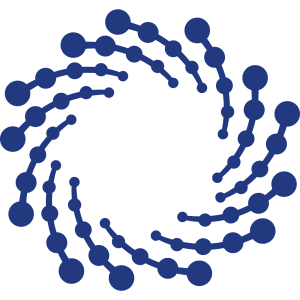Graphitic Carbon Nitride (g-C3N4)-Based Photocatalysts for Artificial Photosynthesis and Environmental Remediation: Are We a Step Closer To Achieving Sustainability?
1
Multidisciplinary
Platform of Advanced Engineering, Chemical Engineering Discipline,
School of Engineering, Monash University, Jalan Lagoon Selatan, Bandar Sunway, 47500 Selangor, Malaysia
|
Publication type: Journal Article
Publication date: 2016-05-20
scimago Q1
wos Q1
SJR: 16.455
CiteScore: 100.5
Impact factor: 55.8
ISSN: 00092665, 15206890
PubMed ID:
27199146
General Chemistry
Abstract
As a fascinating conjugated polymer, graphitic carbon nitride (g-C3N4) has become a new research hotspot and drawn broad interdisciplinary attention as a metal-free and visible-light-responsive photocatalyst in the arena of solar energy conversion and environmental remediation. This is due to its appealing electronic band structure, high physicochemical stability, and "earth-abundant" nature. This critical review summarizes a panorama of the latest progress related to the design and construction of pristine g-C3N4 and g-C3N4-based nanocomposites, including (1) nanoarchitecture design of bare g-C3N4, such as hard and soft templating approaches, supramolecular preorganization assembly, exfoliation, and template-free synthesis routes, (2) functionalization of g-C3N4 at an atomic level (elemental doping) and molecular level (copolymerization), and (3) modification of g-C3N4 with well-matched energy levels of another semiconductor or a metal as a cocatalyst to form heterojunction nanostructures. The construction and characteristics of each classification of the heterojunction system will be critically reviewed, namely metal-g-C3N4, semiconductor-g-C3N4, isotype g-C3N4/g-C3N4, graphitic carbon-g-C3N4, conducting polymer-g-C3N4, sensitizer-g-C3N4, and multicomponent heterojunctions. The band structures, electronic properties, optical absorption, and interfacial charge transfer of g-C3N4-based heterostructured nanohybrids will also be theoretically discussed based on the first-principles density functional theory (DFT) calculations to provide insightful outlooks on the charge carrier dynamics. Apart from that, the advancement of the versatile photoredox applications toward artificial photosynthesis (water splitting and photofixation of CO2), environmental decontamination, and bacteria disinfection will be presented in detail. Last but not least, this comprehensive review will conclude with a summary and some invigorating perspectives on the challenges and future directions at the forefront of this research platform. It is anticipated that this review can stimulate a new research doorway to facilitate the next generation of g-C3N4-based photocatalysts with ameliorated performances by harnessing the outstanding structural, electronic, and optical properties for the development of a sustainable future without environmental detriment.
Found
Nothing found, try to update filter.
Found
Nothing found, try to update filter.
Top-30
Journals
|
50
100
150
200
250
300
|
|
|
Applied Catalysis B: Environmental
287 publications, 4.45%
|
|
|
Applied Surface Science
229 publications, 3.55%
|
|
|
Chemical Engineering Journal
223 publications, 3.46%
|
|
|
Journal of Materials Chemistry A
175 publications, 2.72%
|
|
|
International Journal of Hydrogen Energy
153 publications, 2.37%
|
|
|
Journal of Colloid and Interface Science
143 publications, 2.22%
|
|
|
ACS applied materials & interfaces
115 publications, 1.78%
|
|
|
Journal of Environmental Chemical Engineering
111 publications, 1.72%
|
|
|
Journal of Alloys and Compounds
94 publications, 1.46%
|
|
|
RSC Advances
86 publications, 1.33%
|
|
|
Catalysis Science and Technology
74 publications, 1.15%
|
|
|
Catalysts
73 publications, 1.13%
|
|
|
New Journal of Chemistry
72 publications, 1.12%
|
|
|
Separation and Purification Technology
71 publications, 1.1%
|
|
|
Small
69 publications, 1.07%
|
|
|
Chemosphere
66 publications, 1.02%
|
|
|
ACS Sustainable Chemistry and Engineering
64 publications, 0.99%
|
|
|
Journal of Physical Chemistry C
63 publications, 0.98%
|
|
|
Carbon
63 publications, 0.98%
|
|
|
Journal of Photochemistry and Photobiology A: Chemistry
60 publications, 0.93%
|
|
|
Angewandte Chemie - International Edition
58 publications, 0.9%
|
|
|
Journal of Hazardous Materials
57 publications, 0.88%
|
|
|
Angewandte Chemie
57 publications, 0.88%
|
|
|
Advanced Functional Materials
56 publications, 0.87%
|
|
|
ACS Applied Nano Materials
53 publications, 0.82%
|
|
|
Chemical Communications
51 publications, 0.79%
|
|
|
ChemCatChem
50 publications, 0.78%
|
|
|
Nanoscale
48 publications, 0.74%
|
|
|
ChemistrySelect
46 publications, 0.71%
|
|
|
50
100
150
200
250
300
|
Publishers
|
500
1000
1500
2000
2500
3000
3500
|
|
|
Elsevier
3022 publications, 46.9%
|
|
|
Royal Society of Chemistry (RSC)
853 publications, 13.24%
|
|
|
Wiley
828 publications, 12.85%
|
|
|
American Chemical Society (ACS)
673 publications, 10.45%
|
|
|
Springer Nature
471 publications, 7.31%
|
|
|
MDPI
236 publications, 3.66%
|
|
|
IOP Publishing
72 publications, 1.12%
|
|
|
Taylor & Francis
40 publications, 0.62%
|
|
|
AIP Publishing
30 publications, 0.47%
|
|
|
Frontiers Media S.A.
17 publications, 0.26%
|
|
|
Pleiades Publishing
14 publications, 0.22%
|
|
|
Beilstein-Institut
11 publications, 0.17%
|
|
|
World Scientific
11 publications, 0.17%
|
|
|
The Electrochemical Society
10 publications, 0.16%
|
|
|
Korean Society of Industrial Engineering Chemistry
9 publications, 0.14%
|
|
|
King Saud University
7 publications, 0.11%
|
|
|
American Physical Society (APS)
6 publications, 0.09%
|
|
|
Oxford University Press
6 publications, 0.09%
|
|
|
IWA Publishing
6 publications, 0.09%
|
|
|
Science in China Press
6 publications, 0.09%
|
|
|
OAE Publishing Inc.
6 publications, 0.09%
|
|
|
Taiwan Institute of Chemical Engineers
5 publications, 0.08%
|
|
|
Walter de Gruyter
5 publications, 0.08%
|
|
|
SAGE
4 publications, 0.06%
|
|
|
Nonferrous Metals Society of China
4 publications, 0.06%
|
|
|
Tsinghua University Press
4 publications, 0.06%
|
|
|
American Association for the Advancement of Science (AAAS)
4 publications, 0.06%
|
|
|
Institute of Electrical and Electronics Engineers (IEEE)
3 publications, 0.05%
|
|
|
Proceedings of the National Academy of Sciences (PNAS)
3 publications, 0.05%
|
|
|
500
1000
1500
2000
2500
3000
3500
|
- We do not take into account publications without a DOI.
- Statistics recalculated weekly.
Are you a researcher?
Create a profile to get free access to personal recommendations for colleagues and new articles.
Metrics
6.4k
Total citations:
6447
Citations from 2024:
1288
(19.99%)
Cite this
GOST |
RIS |
BibTex |
MLA
Cite this
GOST
Copy
Lee K. et al. Graphitic Carbon Nitride (g-C3N4)-Based Photocatalysts for Artificial Photosynthesis and Environmental Remediation: Are We a Step Closer To Achieving Sustainability? // Chemical Reviews. 2016. Vol. 116. No. 12. pp. 7159-7329.
GOST all authors (up to 50)
Copy
Lee K., Tan L. L., Ng Y. H., Yong S., Chai S. Graphitic Carbon Nitride (g-C3N4)-Based Photocatalysts for Artificial Photosynthesis and Environmental Remediation: Are We a Step Closer To Achieving Sustainability? // Chemical Reviews. 2016. Vol. 116. No. 12. pp. 7159-7329.
Cite this
RIS
Copy
TY - JOUR
DO - 10.1021/acs.chemrev.6b00075
UR - https://doi.org/10.1021/acs.chemrev.6b00075
TI - Graphitic Carbon Nitride (g-C3N4)-Based Photocatalysts for Artificial Photosynthesis and Environmental Remediation: Are We a Step Closer To Achieving Sustainability?
T2 - Chemical Reviews
AU - Lee, Keat
AU - Tan, Lling Lling
AU - Ng, Yun Hui
AU - Yong, S.T.
AU - Chai, Siang-Piao
PY - 2016
DA - 2016/05/20
PB - American Chemical Society (ACS)
SP - 7159-7329
IS - 12
VL - 116
PMID - 27199146
SN - 0009-2665
SN - 1520-6890
ER -
Cite this
BibTex (up to 50 authors)
Copy
@article{2016_Lee,
author = {Keat Lee and Lling Lling Tan and Yun Hui Ng and S.T. Yong and Siang-Piao Chai},
title = {Graphitic Carbon Nitride (g-C3N4)-Based Photocatalysts for Artificial Photosynthesis and Environmental Remediation: Are We a Step Closer To Achieving Sustainability?},
journal = {Chemical Reviews},
year = {2016},
volume = {116},
publisher = {American Chemical Society (ACS)},
month = {may},
url = {https://doi.org/10.1021/acs.chemrev.6b00075},
number = {12},
pages = {7159--7329},
doi = {10.1021/acs.chemrev.6b00075}
}
Cite this
MLA
Copy
Lee, Keat, et al. “Graphitic Carbon Nitride (g-C3N4)-Based Photocatalysts for Artificial Photosynthesis and Environmental Remediation: Are We a Step Closer To Achieving Sustainability?.” Chemical Reviews, vol. 116, no. 12, May. 2016, pp. 7159-7329. https://doi.org/10.1021/acs.chemrev.6b00075.













































